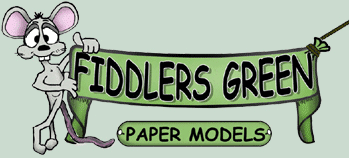Model Scales: H0 and N
This guide will give you some ways to measure model railroad items to tell whether they are N scale or HO scale.
I regularly see items listed in N scale that are really HO scale, and I assume the opposite happens as well. Here are some measurements:
1. For track, measure the distance between the rails. N scale is 5/16 inch between rails, HO scale is 5/8 inch between rails.
2. For engines, measure their length. An N scale diesel engine is about 4 inches long. An HO engine is about 8 inches long. You can also measure the distance between the wheels. The distance from the outside of the flange of one wheel to the outside of the flange of the opposite wheel is about the same as the distance between rails.
3. For freight cars, measure their length. A typical N scale freight car is about 3 1/2 inches long. An HO scale car is about 7 inches long. Passenger cars can be somewhat longer in both scales. As with engines, you can also tell by measuring the distance between the wheels.
4. For buildings, measure the height of the doors. A typical N scale door in a house is about 1/2 inch tall. An HO scale door is about 1 inch tall. Doors in industrial buildings are a little taller, but still fairly close to these measurements.
5. People are just a little shorter than the heights of the doors given above.
6. For automobiles, measure their length. A typical N scale automobile is a little over 1 inch long. An HO automobile is over 2 inches long.
7. For telephone poles, measure their height. A typical N scale pole is around 3 inches tall. An HO pole is around 6 inches tall.
These measurements should be enough to give you a good, solid way to tell whether you have N scale or HO scale. You can also use these measurements to identify O scale. Since HO stands for Half O, O scale items measure about twice as large as HO scale items.
I hope you find this guide helpful.
N scale is a popular model railway scale/track gauge. Depending upon the manufacturer (or country), the scale ranges from 1:148 to 1:160. In all cases, the gauge (the distance between the rails) is 9 mm. The term N gauge refers to the track dimensions, but in the UK in particular N gauge refers to their 1:148 scale, 9 mm track gauge modeling. The terms N scale and N gauge are often used interchangeably. An advantage of N scale is that it allows hobbyists to build layouts that take up less space than HO scale, or put longer track runs into the same amount of space, because the models are smaller (by nearly a half) than they are in HO scale (1:87). The name comes from an abbreviation for Nine millimetres, which is the distance between the inside edges of the rails. N scale however, is not the smallest commercially available scale, as Z scale is smaller yet at 1:220.
Although trains and accessories of similar gauge and/or scale existed as early as 1927, modern commercially produced N scale models only appeared in 1962. Unlike other scales and gauges, which were de facto standards at best, within two years N scale manufacturers defined the gauge, voltage, as well as the height and type of couplers.
N scale has a large worldwide following. Models are made of very many standard gauge prototypes from every continent. N scale's popularity is second only to HO scale's. In Japan, where space in homes is more limited, N scale is the most popular scale, and HO scale is considered large. Not all modellers select N because they have small spaces, some use N scale in order to build more complex or more visually expansive models.
N scale in Australia has become more popular over the years. Modellers model mainly US, British and European prototypes because until recently the Australian market had no N scale models of local prototype. The creation of local prototypes is now a flourishing "cottage" industry, making Australia N scale modelling more popular each year.
N gauge track and components are also used with larger scales, in particular HOe and OO9 scale for modelling narrow gauge railways. N scale models on Z scale track are used to model metre gauge (Nn3). A small amount of 2' industrial narrow gauge modelling in N scale using custom track is done but there are few suppliers of parts. Nn18 layouts use T scale track and mechanisms to represent minimum gauge railways. N scale trains and structures are often used on HO or larger layouts to create forced perspective, or the illusion that an object is further away than it actually is.

